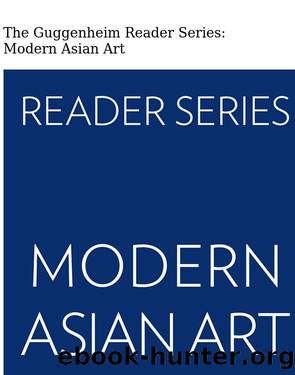The Guggenheim Reader Series by Edward Fry

Author:Edward Fry
Language: eng
Format: epub
Tags: Art
ISBN: 9780892075058
Publisher: Guggenheim Museum
Published: 2013-06-24T00:00:00+00:00
Lee Ufan, Untitled, 1964. Graphite on paper, 56 x 76.5 cm. Collection of the artist, Kamakura, Japan
In From Cuts (1965), Lee builds up an accumulation of marks using thick white oil paint on canvas, evoking the materiality and gestural abstraction of Art Informel. A series of graphite drawings from 1964 show the same interest in texture, and chart the beginnings of his own visual language. In these works, Lee strikes the paper repetitively to create a dense field of dots or lines. Each mark repeats but none is identical; it is repetition with rhythm and infinite difference, like breath. Absent formal composition or expressive imagery, these clusters of markings coalesce as nothing more and nothing less than traces of the artistâs gesture. They also bear a rugged materiality: where the artist has scratched the surface hard with graphite, the ground is torn through, giving the paper a level of physical presence. Such concern with materiality, identity, and difference foreshadow future developments in Leeâs thought and art.
Toward a new structure of thought
Leeâs inquiries into philosophy deepened into formal study at Nihon University in Tokyo from 1958 to 1961. He focused on modern continental philosophy, in particular the phenomenology of Martin Heidegger and Maurice Merleau-Ponty, who sought to overcome the divide between subject and object by situating consciousness in the experiential flow of phenomena. Their methods thus promote perception not as a mental tool for discernment but as a direct bodily experience of being in the world, shifting the definition of the human away from a cognizing subject to a corporeal being that exists at the intersection of the external world and the interior self. As the decade progressed, Leeâs readings of Michel Foucaultâs critical history of modernity, which show how discursive formations of power and knowledge construct a given societyâs canonical and universal truths, influenced his own vehement critique of modern art and encouraged his pursuit of an aesthetics grounded in his own identity and difference. Later still, Lee became interested in Kyoto School metaphysics, whose founder Nishida KitarÅ was the first modern Japanese philosopher to construct an original system of thought by relating Zen Buddhism to Western traditions of ontology and being. Nishida framed consciousness and existence as an undifferentiated experiential oneness between self and phenomena, and postulated âabsolute nothingnessâ not in terms of negation or privation of being but as âpure experienceâ of the fully concrete facts and activities of the here and now. Drawing on these sources, Lee saw the potential to refute the objectification of self and other and the worldview based on hierarchies of difference that formed the foundation of modern Western philosophy and political ideology. If modern art is a âprocess of image objectification based on representational logic that reflected the world,â Leeâs model, manifest in his art and articulated through his writing, subverts that process in order to âlet the world express itself by allowing ordinary objects, which are often ignored, to be set free in the vivid and expansive world of incidents.â22 His
Download
This site does not store any files on its server. We only index and link to content provided by other sites. Please contact the content providers to delete copyright contents if any and email us, we'll remove relevant links or contents immediately.
Technical Art History by Jehane Ragai(234)
The Slavic Myths by Noah Charney(191)
Drawing Landscapes by Barrington Barber(178)
Simply Artificial Intelligence by Dorling Kindersley(170)
Compacts and Cosmetics by Madeleine Marsh(166)
Drawing for the Soul by Zoë Ingram(161)
The Art of Painting Sea Life in Watercolor by Maury Aaseng Hailey E. Herrera Louise De Masi and Ronald Pratt(153)
The Art of Portrait Drawing by Cuong i(150)
Preparing Dinosaurs by Wylie Caitlin Donahue;(142)
Egyptian art by Jean Capart(137)
A text-book of the history of painting by Van Dyke John Charles 1856-1932(132)
Pollak's Arm by Hans von Trotha(126)
Winslow Homer by Shibutani Baku(125)
Through Japan with Brush & Ink by Chiura Obata(111)
Culture and Ideology under the Seleukids by Eva Anagnostou-Laoutides Stefan Pfeiffer(109)
Botanical Illustration by Valerie Price(108)
Pornoterrorism: De-Aestheticising Power by Louis Armand Jaromir Lelek(108)
The Fashionable Mind by Kennedy Fraser(103)
Jane Evans. Chinese Brush Painting. A Complete Course in Traditional and Modern Techniques by Unknown(99)
